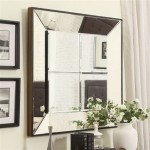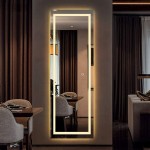Painting Over Mirror Glass: A Guide to Transforming Reflective Surfaces
Mirror glass, with its inherent reflective properties, presents unique challenges for painting. The smooth, non-porous surface makes traditional paint adhesion difficult, and the reflective nature can lead to uneven coverage and unwanted shimmer. However, with the right preparation and techniques, painting over mirror glass can be a viable and visually appealing option for transforming these surfaces into decorative elements or enhancing their aesthetic appeal.
Preparing the Mirror Glass for Painting
Adequate preparation is crucial for successful painting over mirror glass. The first step is to thoroughly clean the surface to remove any dust, grime, or residues that could hinder adhesion. Use a mild cleaning solution, such as a mixture of warm water and dish soap, and a soft cloth or sponge. Avoid abrasive cleaners that could scratch the surface.
After cleaning, you need to roughen the mirror surface to create a textured foundation for the paint to adhere to. This can be achieved using various methods. Sandblasting is a professional option that creates a uniform rough surface, but it requires specialized equipment and expertise. A less specialized approach involves using fine-grit sandpaper (220-grit or finer), sanding the surface gently in circular motions. This process creates microscopic scratches that provide points for the paint to grip.
Another method, often preferred for smaller mirrors, involves applying a primer specifically designed for glass and mirror surfaces. These primers typically contain an etching agent that creates a rough texture on the glass, promoting adhesion. It's crucial to follow the manufacturer's instructions for application and drying time.
Choosing the Right Paint for Mirror Glass
Selecting the appropriate paint is vital for achieving a durable and visually appealing finish. Acrylic paint, known for its water-based formula and quick drying time, is generally a good choice for painting over mirror glass. Choose a high-quality acrylic paint specifically designed for glass or multi-surface applications. These paints are formulated to adhere well to smooth surfaces and provide a durable, washable finish.
Consider the desired aesthetic and choose paint colors accordingly. For a subtle effect, consider using a primer tinted to match the desired color and top it with a clear acrylic sealer for a glossy finish. If a bolder, more opaque finish is desired, apply multiple coats of acrylic paint, allowing each layer to dry completely before applying the next.
Applying Paint to Mirror Glass: Techniques and Considerations
Even with thorough preparation, applying paint to mirror glass requires patience and precision. Use a high-quality paintbrush or roller designed for smooth surfaces. Apply thin, even coats of paint, avoiding drips or uneven coverage.
Allow each coat of paint to dry completely before applying the next, following the manufacturer's drying time recommendations. Multiple thin coats will provide a more even and durable finish than one thick coat. To ensure consistent coverage, consider using a paint sprayer. This technique allows for a smooth, even application, but it requires a well-ventilated area and proper masking to protect surrounding surfaces.
For those seeking a unique effect, consider using special paint techniques such as layering, distressing, or creating stencils. These techniques can add texture, depth, and visual interest to the painted mirror surface. However, it's important to experiment on a small, inconspicuous area first to test the desired effect and ensure satisfactory results.
Additional Tips for Success
To enhance the longevity and visual appeal of your painted mirror glass, consider these additional tips:
- Apply a clear acrylic sealant to protect the painted surface from moisture, abrasion, and fading. This creates a protective barrier and enhances the durability of the finish.
- If you are working with a large mirror, work in sections. This allows you to apply even coats of paint without the paint drying too quickly.
- Use painter's tape to mask off any areas you do not want to paint. This prevents accidental paint splatters and creates clean, crisp lines.
- If you are using a paint sprayer, wear appropriate protective gear, including a respirator mask and gloves. This helps to minimize exposure to paint fumes and ensure safety.
Painting over mirror glass requires meticulous preparation and careful application, but the results can be rewarding. By following these guidelines, you can transform reflective surfaces into unique decorative elements, adding a touch of personality and style to your home or workspace.

Mirror Desighn Glass Painting Designs Etching Fancy Mirrors

Ic Calligraphy Glass Painting On Mirror How To Do It At Home

Mirror Glass Art Painting Designs Patterns Etching

Ic Calligraphy Glass Painting On Mirror How To Do It At Home

Fusing Glass On The Mirror Tenderness Delphi Artist Gallery Painting Designs Ideas

Ic Calligraphy Glass Painting On Mirror How To Do It At Home

5 Minutes With A Pair Of Chinese Export Reverse Mirror Paintings Christie S

Glass Painting Designs Mirror Glasspaintingdesignsmirror Patterns

Diy Painted Mirror Wallpaper Backgrounds Painting

Glasspainting Bird Glass Painting On Mirror Diy Easy








